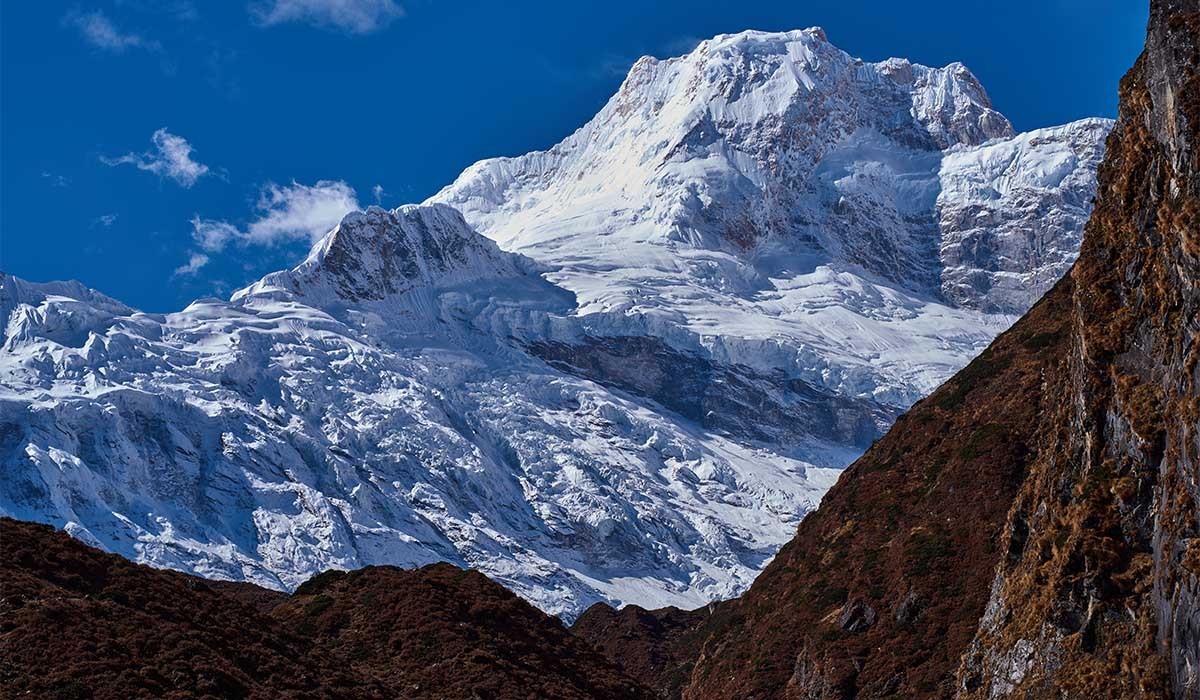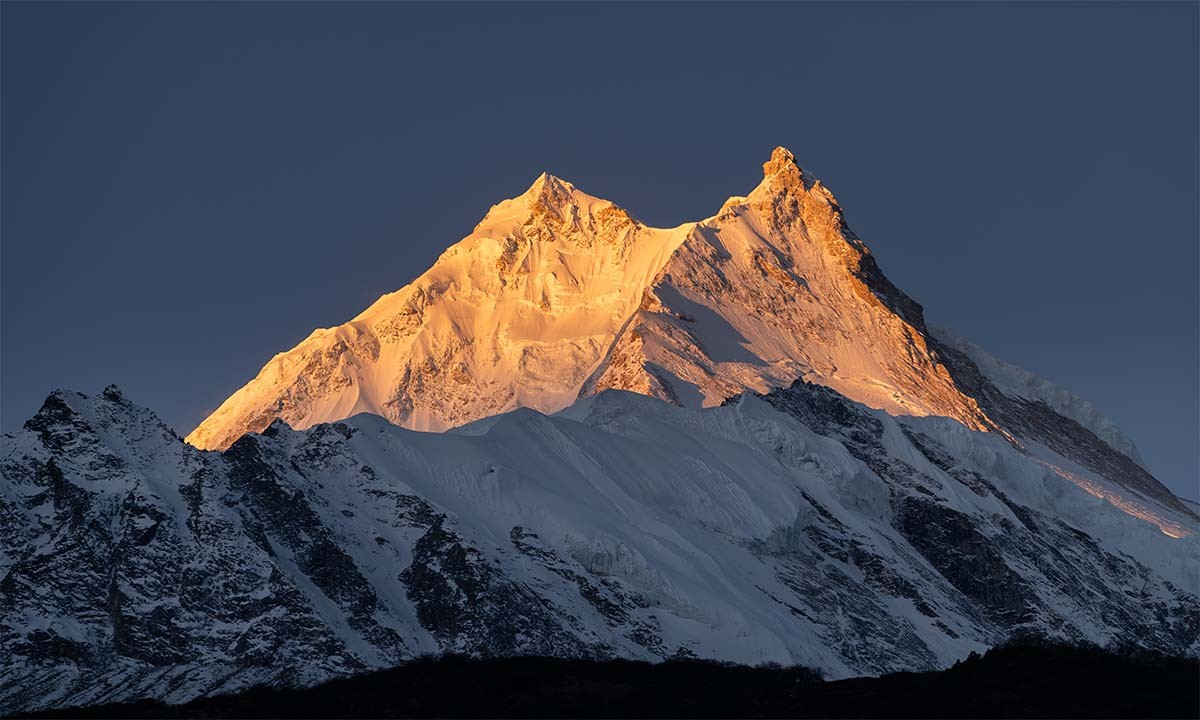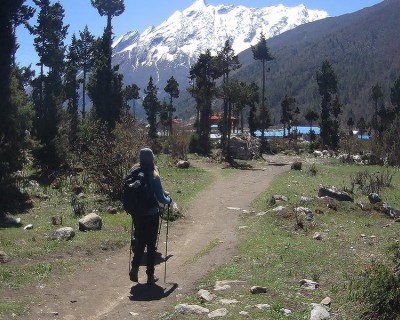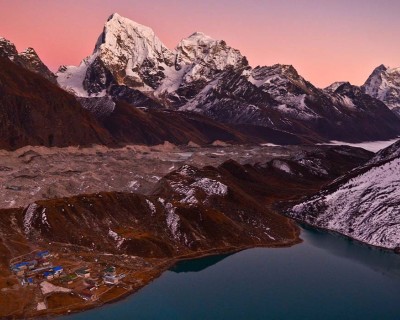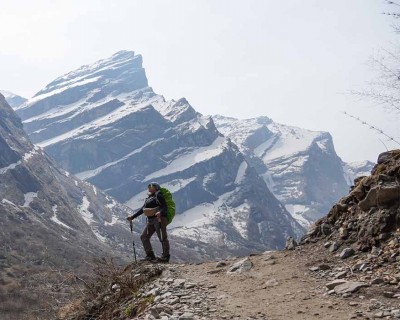How to Prepare for Manaslu Circuit Trek Physically?
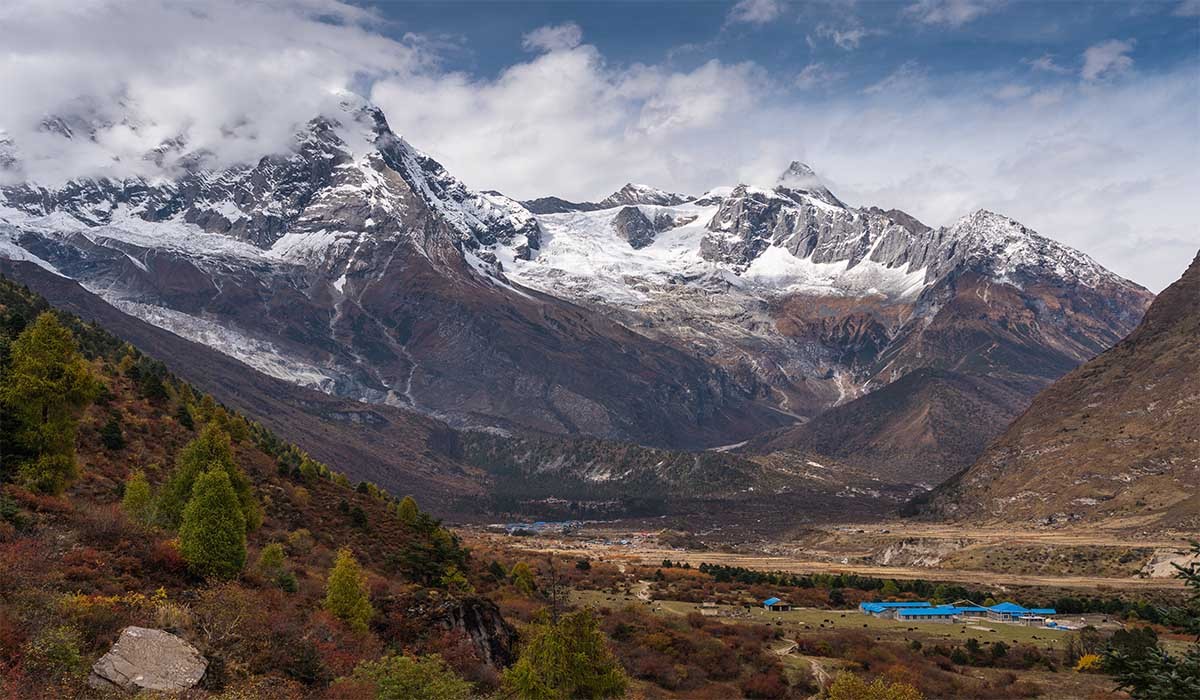
Manaslu Circuit Trek preparation and training for physical fitness directly determines the comfort and the effectiveness of your tour. The trek is considered to be of moderate to strenuous difficulty. It covers a distance of approximately 177 kilometers and rises up to over 5,100 meters. You must trek 6 to 8 hours a day on hilly, stony trails with significant elevation ascension and descent.
Therefore, a healthy cardiovascular base and muscular endurance are the requisites to cope with extended physical exertion in thin air. You should ideally start training at least 8 to 12 weeks before the trek, gradually building endurance, strength and aerobic tolerance.
Cardiovascular fitness is developed by exercise like running, cycling, swimming or brisk walking. Doing these 30 to 60 minutes, at least four times weekly, will make your heart and lungs strong, increasing oxygen efficiency and high-altitude endurance.
To replicate training more trek like, do hikes with a weighted pack (5–10 kg) on uneven terrain to get used to the weight and pace of long-distance trekking. Yoga and stretching also increase flexibility and balance that prevent injury while walking over rugged terrain.
Strength training helps stabilize your body on hills and uneven terrain and minimizes joint stress. Squats, lunges, step-ups, planks and leg presses build lower-body power whereas core exercises improve posture and balance during extended periods of trekking.
Manaslu Circuit Trek Preparation - Mental Readiness and Endurance for Long Days
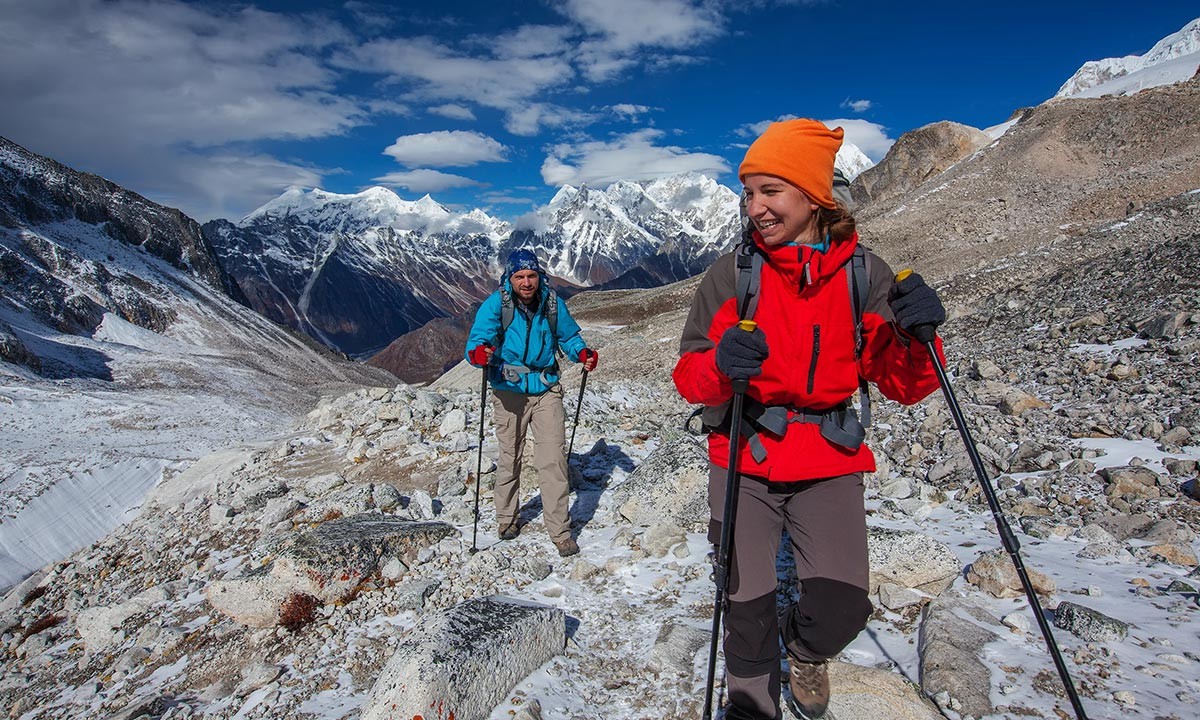
The psychological assessment begins with the acceptance of the fact that the trek is not merely a bodily adventure but also an emotional and mental one. You must prepare to withstand the fatigue, fear and prolonged solitude in remote villages away from civilization. A positive mental state through meditation, being present or just being flexible and patient is necessary.
Resilience for long days along the Manaslu Circuit necessitates psychological determination and optimism. Visualization techniques, journaling or setting small daily goals are factors to stay motivated and keep morale high. The trek involves daily six to eight walking hours over mixed terrain in cold wind or snow with scant facilities along the way.
Keeping practical expectations and viewing the trek as a gradual experiential process rather than a race to the end helps you keep going. Accepting the slower pace and a progressive movement keeps physical energy and mental balance intact in the process.
Manaslu circuit is a very unspoiled and less commercialized trek of Nepal, so expect less comfort, intermittent electricity and weak network connection. Embracing minimalism and letting go of comfort in advance lets you appreciate the tranquility and majesty of mountains more than the absence of modern comforts.
How Difficult is Manaslu Trek - Altitude and Thin Air
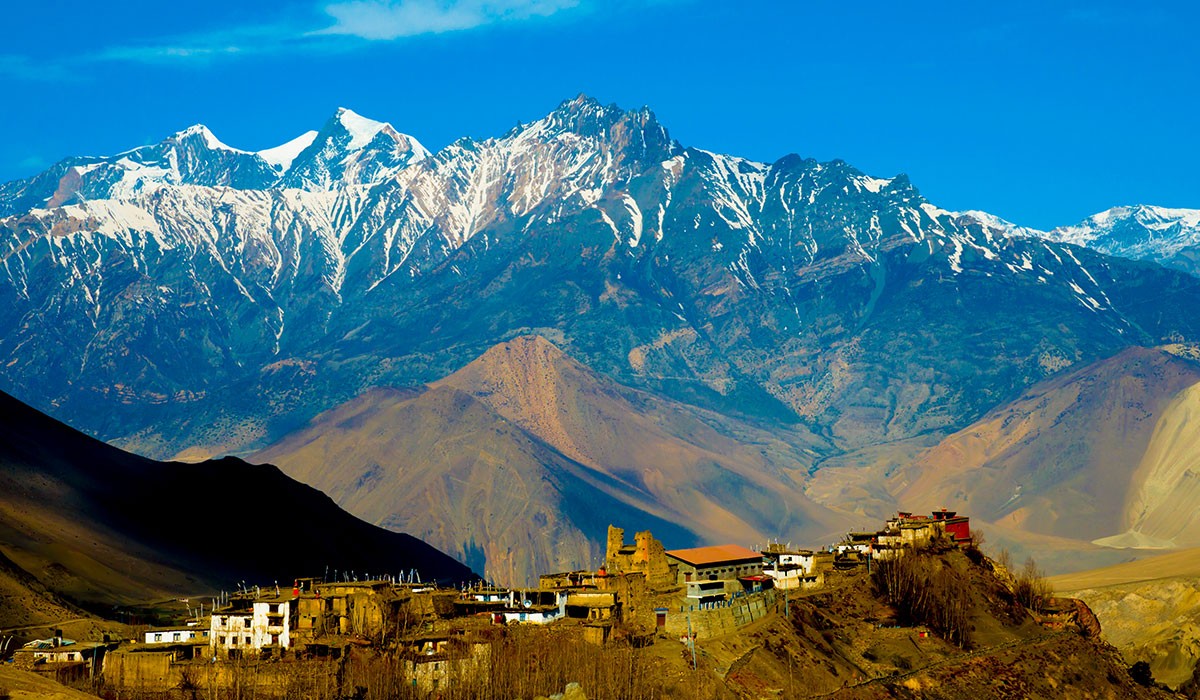
Manaslu Circuit Trek is a high altitude journey that increasingly exposes you to thinner air and lower oxygen levels. From the early stages at Jagat (1,350 m) and Deng (2,130 m), altitude effects are subtle but with a gradual build-up.
As you ascend higher to Namrung (2,630 m) and Lho (3,180 m), lower oxygen condition makes physical exertion more noticeable. Above 3,500 meters at Samagaun (3,500 m) and Samdo (3,860 m), the atmosphere is very thin. Oxygen levels drop significantly and simple activity, such as climbing steep trails or trekking with a light pack, will induce rapid fatigue.
Even seasoned trekkers frequently feel breathlessness, headaches and coordination drops. The altitude also makes weather effects more pronounced. The cold, dry and thin air quickly dehydrates the body and makes every step feel like a test of strength.
While traversing Larkya La Pass (5,106 m), there is roughly half as much oxygen as at sea level. By this time, the body undergoes acute hypoxic stress and thus more severe symptoms such as dizziness, nausea, headache and extreme exhaustion.
Descending to Bimtang (3,720 m) eases some of this but until the trek reaches lower altitudes such as Dharapani (1,430 m), the combined effect of high altitude continues to tax strength, endurance and overall physical performance. At every level, the thin air dictates the pace and demands more energy making altitude the most characteristic test of the Manaslu Circuit.
Preventing and Managing Altitude Sickness
Prevention of high altitude sickness on treks like the Manaslu Circuit begins with acclimatization. Gradual ascent without gaining height too quickly allows the body to acclimatize to decreased oxygen. Trekking itineraries generally include rest days at crucial altitudes to allow physiological adaptation.
Dehydration worsens symptoms of altitude sickness and thus hydration is crucial. Consuming plenty of water and electrolyte fluids maintains blood volume and oxygen supply to tissues. Also, carbohydrate meals provide good energy to the body with a lesser load on the cardiovascular system, thereby making it easier for the body to adapt to higher altitudes.
In addition, acetazolamide (Diamox) is sometimes taken to accelerate acclimatization by permitting the body to adjust faster in thinner air. Supplemental oxygen while not always necessary, can provide relief when symptoms are extreme. Maintaining close monitoring of your body, observing the first signs of chronic headache, nausea or dizziness and acting according to it immediately is the most crucial factor preventing altitude sickness from worsening.
Also, steady walking, halting to rest regularly and not overdoing it are key to easy going journey. Avoiding alcohol and nutritious food relaxes the body and rhythmic breathing maximizes oxygenation. Also, trekking in the presence of an experienced guide provides a guarantee of prompt assistance if any symptoms occur, along with additional security.
Manaslu Trek Cost Planning
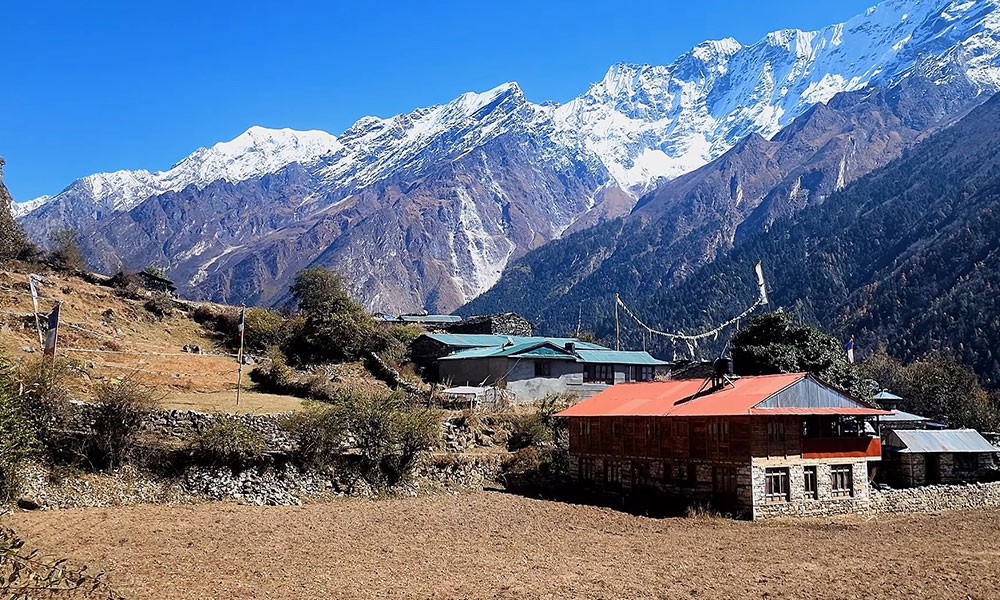
The Manaslu Circuit Trek planning requires a clear understanding of the most important cost factors to organize a smooth and well-planned trip. Manaslu trek cost varies depending on the trek duration, choice of guide and porter services, accommodation levels and other facilities.
You can usually plan to spend between $1,290 and $4,000 per individual. Budgeting correctly means that money will be set aside for necessities to avoid last-minute panic and the journey will be comfortable as well as enjoyable.
The costs of transport and accommodation are considerable. Travel from Kathmandu to Machha Khola, the start of the trek, is by public bus ($15–$25) or private jeep ($150–$200) and about the same return.
Accommodation on the trek is mainly in teahouses with basic rooms for $5–$15 per night. Meals cost between $25–$35 per day with prices increasing with higher elevation as it becomes more remote and there are fewer provisions. You can pre budget so you won't have any surprises along the way.
Permits, guides and other services form another vital part of the budget. Manaslu Restricted Area Permit costs $75–$100 and Conservation Area Permits (both Manaslu and Annapurna) are an additional $50. A licensed guide is compulsory to hire at $30–$40 a day and porters charge $25–$30 per day.
The rest of the expenses are rental of gears ($56–$112 for 12-14 days), hot shower or charging fees ($2–$5 per time), travel insurance ($150–$200) and porters' and guides' tipping ($50–$100 per person). By accounting for these expenses in advance, you can make financial arrangements that allow you to fully enjoy the Manaslu Circuit’s experience and natural beauty.
Manaslu Circuit Trek Preparation - Trekking Insurance and Emergency Evacuation Plans
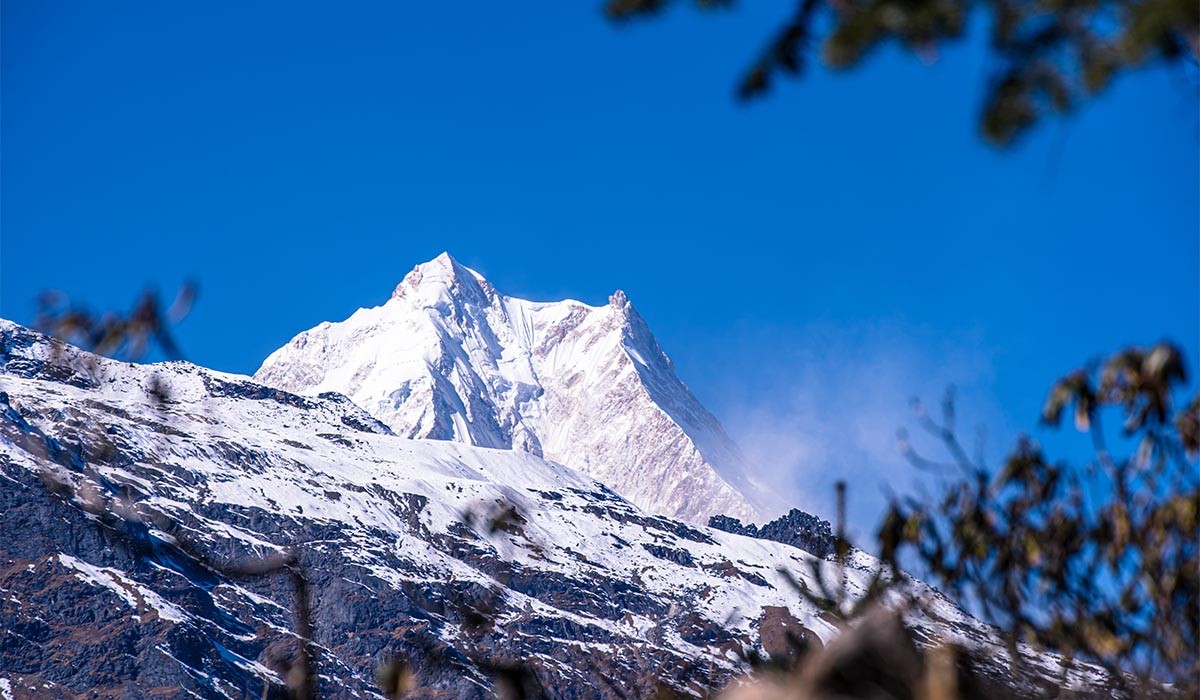
The trek to the Manaslu region traverses remote Himalayan terrain where medical care and transportation infrastructure do not exist or are not readily available. At heights above 5,000 meters, the risk of altitude sickness, mishap or sudden weather obstruction is considerable.
For such high-altitude treks, policy covering activities above 5,000 meters, emergency helicopter evacuation, medical evacuation and trip cancellation is necessary. Thorough trekking insurance can guarantee peace of mind when the mountain conditions are unpredictable.
Emergency evacuation planning is also essential since the remoteness of the Manaslu region can present rescuers with difficulties in reaching the area and make haste a necessity. For acute mountain sickness, major injury or other medical emergencies, helicopter evacuation is optimal and often the sole option for rapid transportation to Kathmandu or Pokhara hospitals.
Rescues can cost several thousand dollars if not covered by insurance. Having electronic and printed versions of your insurance policy and emergency contact details will have your trekking guide or team acting quickly in the event of evacuation.
Besides, you should have a well-structured personal emergency plan. These include telling someone close about your schedule, carrying communication gear such as a satellite phone or GPS messenger and trekking with an experienced guide who has first aid and altitude response training.
Educating yourself on the symptoms of altitude sickness and its preventive measures is also essential. Comprehensive insurance and backup plans provide an assurance that even when matters deteriorate, you are covered and supported.
Manaslu Trek Preparation - Staying Safe on Trails
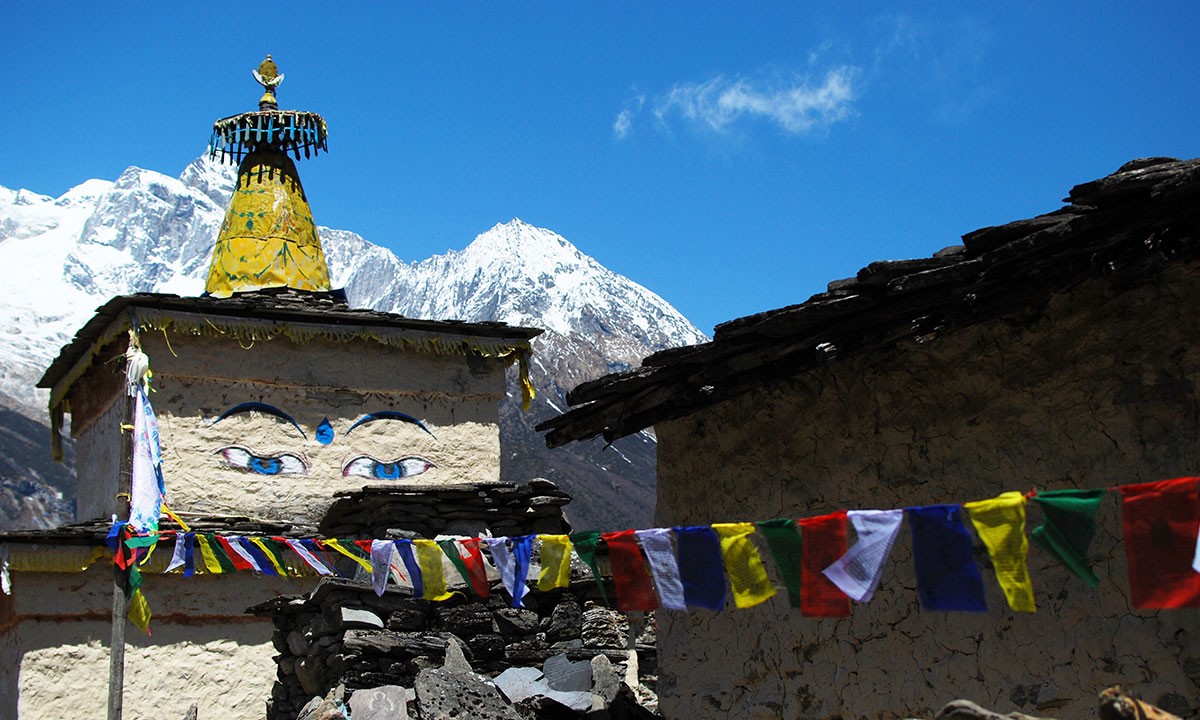
The Manaslu Circuit Trek is a high-altitude walk through forested trails, river crossings, loose rock terrain, deep gorges, narrow cliffside paths, glacial valleys and high altitude passes. So, trips and falls are always possible. Daily weather forecasts, trekking guides and avoiding travel during rain or snowfalls are easy precautions.
Wearing sturdy trekking boots with a firm grip, the utilization of a trekking pole and sensible pacing can go a long way towards easy and comfortable journey. Knowing the trail, reading the maps and listening to your guide's advice are also necessary for completing tricky parts of the trail safely.
The weather in the Manaslu area has a tendency to turn quickly, making a moderate trail an unsafe one within hours. Rain, fog, and snow make trails slippery and reduce visibility and signs and track markings cannot be noticed. Pre season planning, carrying waterproof breeches and being ready to stop or modify trekking schedules if the weather worsens are essential.
Even small wounds can become infected quickly if not treated on time. So, a basic first aid instruction and a well stocked kit are also vital. Knowledge of altitude is the other vital element of trail safety. Slow and steady trekking provides your body the time to acclimatize to high altitudes and minimizes fatigue-driven errors. Never take shortcuts from the designated trails which are through loose or avalanche terrain.
Maintain a comfortable distance from yaks and mules, hydrate, refuel and get enough rest. Start early each morning to cross high passes before afternoon breezes and reach your destination before nightfall. Lastly, always heed local advice guides, locals and teahouse proprietors know weather and trail conditions.
In summary, good planning, prudence and sensitivity to the terrain render the Manaslu trek safe, worthwhile Himalayan experience.
Essential Gear for Manaslu Trek Nepal
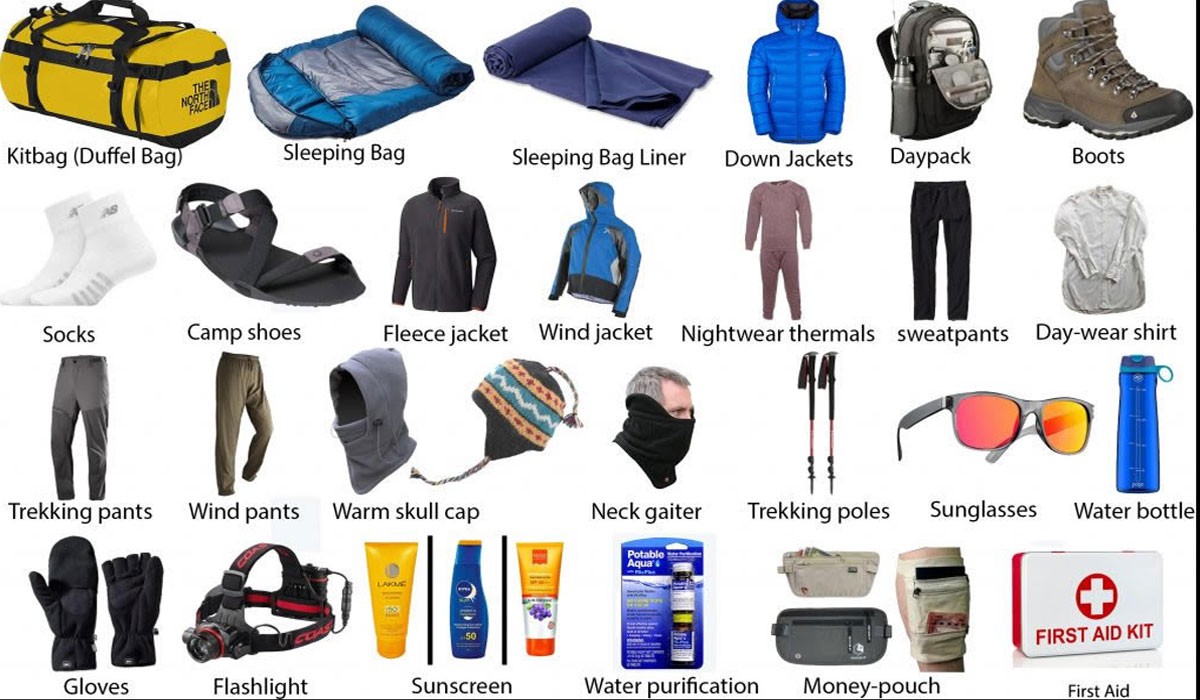
Qualitative and functional gear and equipment ensure safety, comfort and efficiency during your wilderness travel. Navigation and communication gear like a map of the trekking trail, a compass and a GPS unit, can avoid getting lost, especially in cloudy or whiteout conditions.
A mobile phone with a local SIM or a satellite phone for emergency use is necessary as the network coverage is extremely weak. Pack spare batteries or portable solar chargers to maintain all electronic gear on the trek in good working condition.
Health, safety and personal care items are necessities for high altitude treks like the Manaslu Circuit. A well stocked first aid kit is necessary. Sunscreen lotion, lip balm with SPF protection, sunglasses with UV coating and a refillable water bottle with purification tablets avoid sunburn, dehydration and waterborne illness. Trekking poles reduce knee strain and improve balance on rough ground and a decent headlamp comes in handy for early starts or delays.
Miscellaneous equipment can really add up, particularly when backpacking in less serviced areas. Sleeping bags of good quality with sub-zero ratings allow you to have cozy and comfortable sleep.
Likewise, water-resistant covers and dry bags protect food, documents and electronics from rain or snow. Additionally, carrying a multi-tool, duct tape and extra ropes can assist with minor repairs or sudden problems along the way.
Clothing Layers for Varying Temperatures on the Manaslu Circuit
The base layer manages the body temperature, drawing off moisture. When trekking up from tropical valleys into alpine passes, managing moisture is especially important. Saturated clothing can quickly make the body cold, leading to heightened risks of hypothermia at higher elevations.
The base layer must be of synthetic fabrics such as polyester or natural materials like merino wool, both of which dry fast and don't create odors. Cotton is not recommended, as it holds water and provides little insulation when wet.
The mid layer is the most important in keeping body heat in and not restricting movement. On the Manaslu Circuit, where it becomes very cold between villages such as Samagaon and Larkya La Pass, a warm yet light middle layer is needed. Fleece jacket, light down sweater or synthetic insulated jacket are perfect choices.
The outr layer of a decent rain jacket keeps the damp at bay while allowing sweat to escape. Likewise, wearing waterproof trousers affords complete coverage in bad weather. Light packability is also crucial as this layer will have to be easily removed during non-use conditions.
By carefully layering these pieces during the trek, you are able to stay dry, warm and safe in the Manaslu Circuit's diverse landscape.
Packing Smart but Light
When trekking the Manaslu Circuit, clever packing is a balancing act between carrying enough for safety and comfort and keeping it light enough to last over long, rocky trails.
A good packing strategy starts with multi purpose gear: a compressible down filled jacket in a small pouch, quick drying base layers that double as pajamas and collapsible trekking poles.
Clothing should be layered to adapt to the extreme temperature fluctuations and shoes should be tough but light with rapid drying socks and gaiters to keep snow and mud out.
Through thoughtful selection of light, multi purpose and essential gear, you are able to stay mobile and have endurance while being well prepared to handle the adversity of the Manaslu Circuit.
Permits Required for Manaslu Trek Nepal
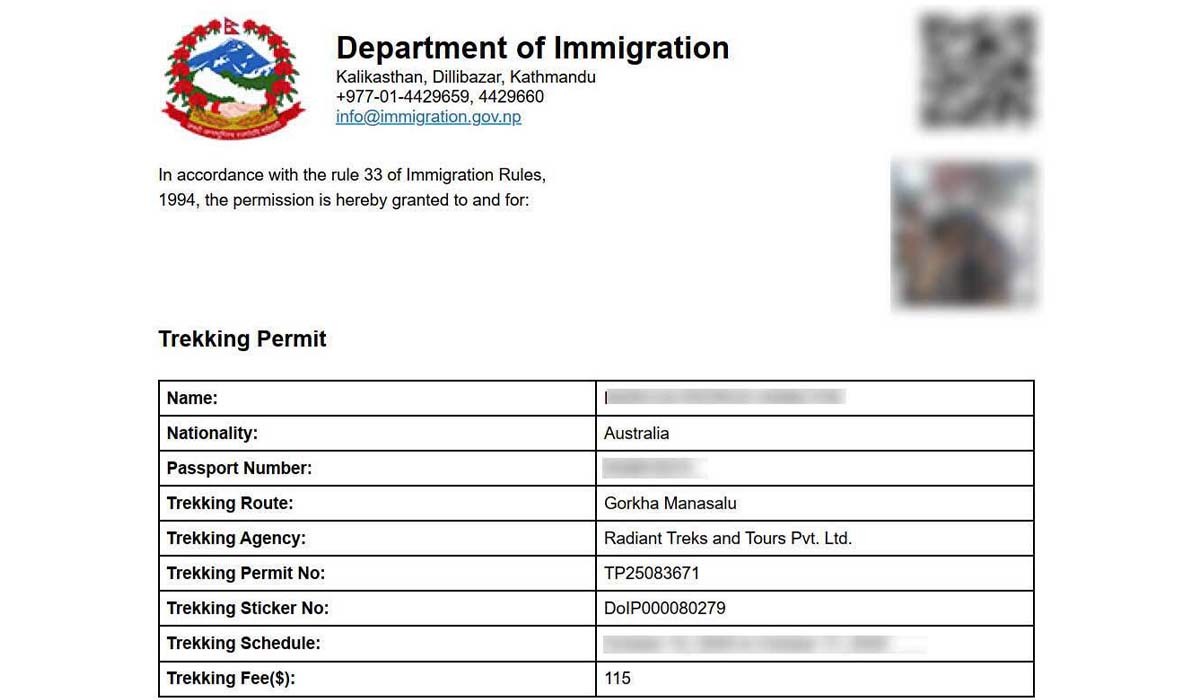
The Manaslu Restricted Area Permit (MRAP) is the primary essential to trek in the Manaslu region. Since it is a restricted area, the government maintains access tightly under their control for preserving the fragile environment and local inhabitants. MRAP is mandatory for all trekkers.
Aside from the MRAP, you would also require the Annapurna Conservation Area Project (ACAP) and the Manaslu Conservation Area Project (MCAP) permits. These would ensure tourism contributes to sustainable natural resource management as well as local community management. All the permits should be purchased prior to arrival and brought on the trek since they might need to be shown at police checkpoints along the way.
Obtaining permits for the Manaslu trek is not only a legal requirement but also a critical safety measure. We ensure that all necessary permits are arranged in advance and that you are accompanied by experienced, licensed guides who are familiar with the terrain, emergency procedures and local regulations. This assures both compliance and protection throughout the trek.
Overall, being aware of permits required and advance planning is necessary to ensure a responsible, safe and legally sound trek around the Manaslu Circuit.
How to Prepare for Manaslu Region Trekking - Hiring a Licensed Guide and Porter
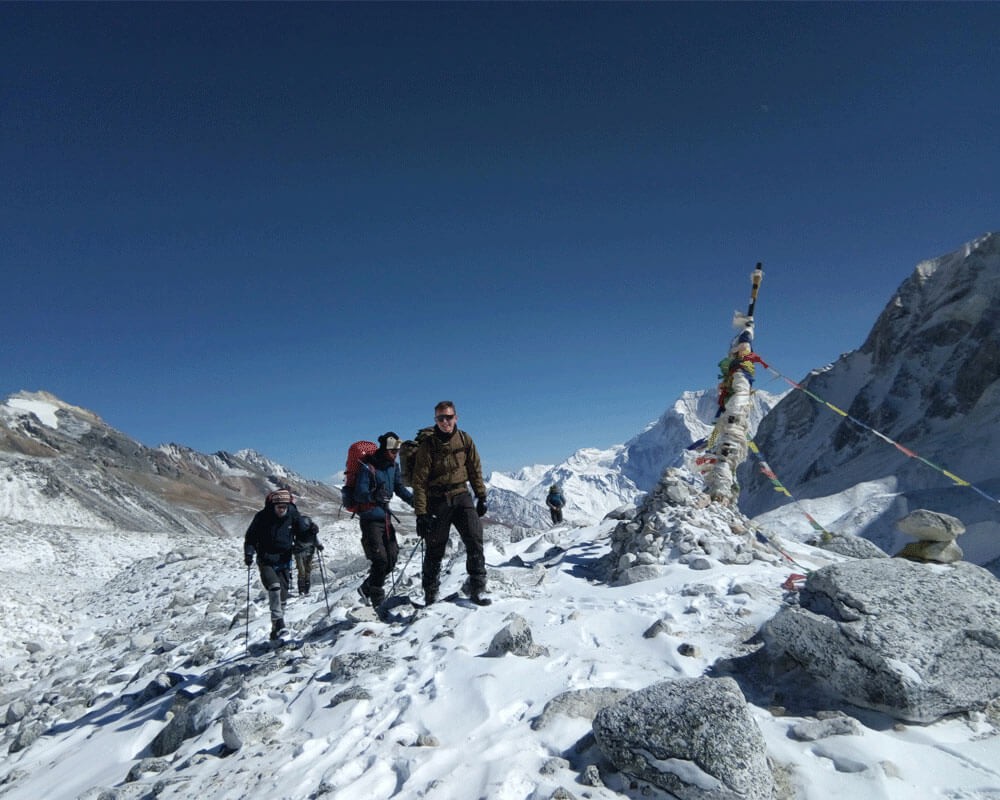
The Manaslu Circuit is located in a controlled area and regulations require trekking with officially approved guides. A qualified trekking guide provides valuable information on trail and climatic conditions, acclimatization and potential dangers along the way.
They can interpret the nature of environmental complexities, modify the itineraries as required and solve the uncertainties at ease. Their experience completes the whole trekking adventure with local culture, traditions and natural phenomena that are not so simple to understand on your own.
Besides, porters carry your loads and prevent you from tiredness, joint fatigue and accidents on steep, rocky terrain. Porters tend to be locals familiar with the shortcuts, safe points for navigation and terrain nuances. In addition to physical assistance, porters help make logistical matters more efficient, assist in setting up tents and coordinate supplies.
Hiring a trained guide and a strong porter is not just physical support but also a strategic safety precaution for trekking at a high elevation in a far-off area. They are in touch with local officials and teahouses at all times and are able to render immediate assistance if a need should arise.
They also assist in tracking altitude sickness symptoms, dehydration or exhaustion, enabling immediate response prior to the symptoms becoming lethal. In addition, the utilization of local guides and porters encourages sustainable tourism since trekking supports the local population.
Arrangement of Tea Houses and Lodges Along the Manaslu Trek Route
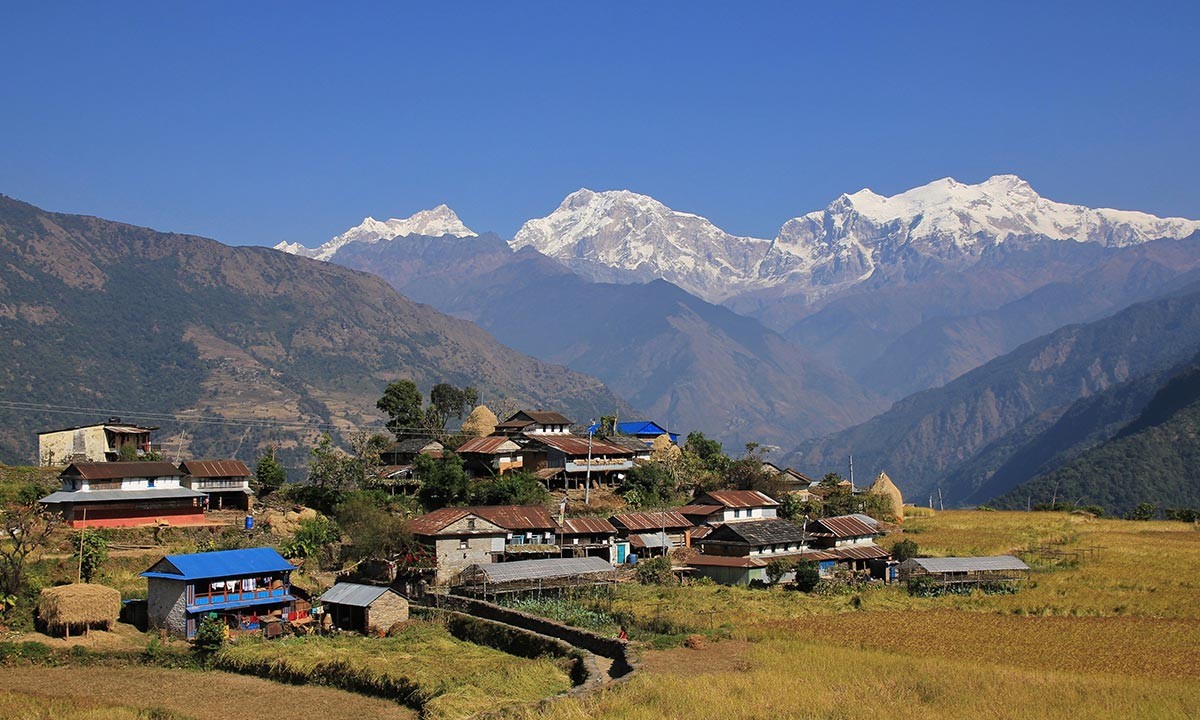
Arranging accommodation is a crucial aspect of preparation for the Manaslu Circuit, as the region is remote and sparsely settled in comparison to busier trekking routes like Annapurna or Everest. You will basically stay in tea houses which are simple, family-run accommodations. Preparation involves research of daily treks between lodges, availability of meals and seasonal operation.
Tea houses usually offer simple rooms, shared toilets, simple bedding and hot meals. Hot showers are available but limited and often at an extra fee. Knowing what each tea house has means that you can pack efficiently and not bring unnecessary luggage.
Teahouses are not just places to stay, but also acclimatization stops, nutrition points and risk management points. Furthermore, they function as an emergency communication and coordination center offering you exposure to local support and information in case unexpected weather or trail conditions occur.
Prebooking of a tea house is essential to ensure a decent room during high season. Pre planning with a clear idea of accommodations not only enhances comfort but also has a positive impact on safety, stamina and overall success of the Manaslu Circuit trek.
Ideal Trekking Seasons for Manaslu
The Manaslu Circuit is best walked in spring and autumn when the weather is most stable and the trail is safest. Spring brings warm weather at lower elevations with the forests and valleys filled with rhododendron and other alpine flowers.
The higher elevations remain cold but manageable and there are clear skies on most days. The crossing of ridges, passes and rivers is more comfortable at this time. Spring also avoids the high monsoon rainfall, reducing the risks of landslides, muddy paths and rivers in flood, although occasional snow can still be at the high passes.
Autumn is peak trekking season with clear, crisp weather and minimal rainfall. This is the optimal time for seeing the Manaslu massif and the massive peaks and landscape are at their most magnificent state. Temperatures are generally stable and mild and the paths are drier and less prone to weather-induced delays. Autumn also offers more secure conditions for high passes and river crossings.
Spring and autumn largely offer the best combination of clear skies, pleasant weather and trail safety and hence are the best seasons to plan your Manaslu Circuit adventure.
Also Read:
